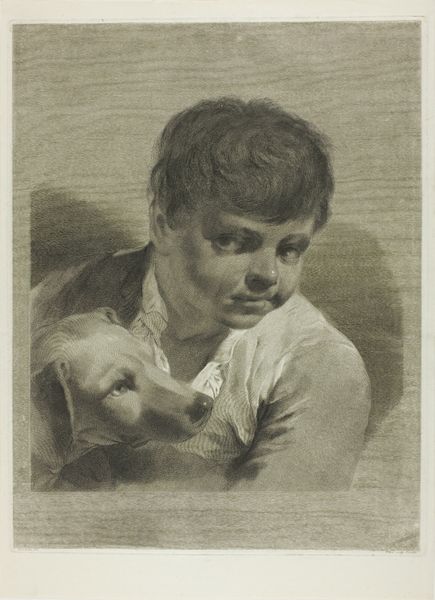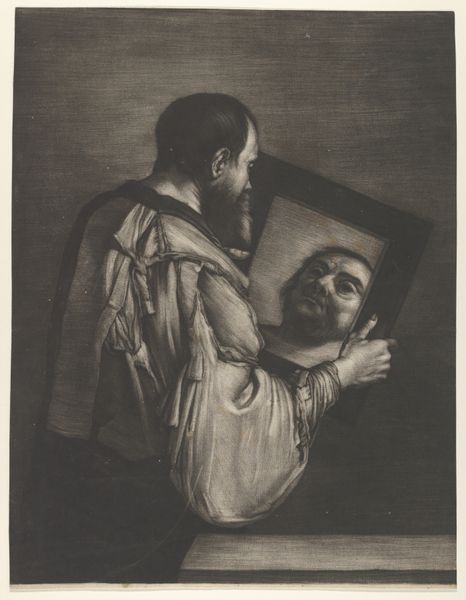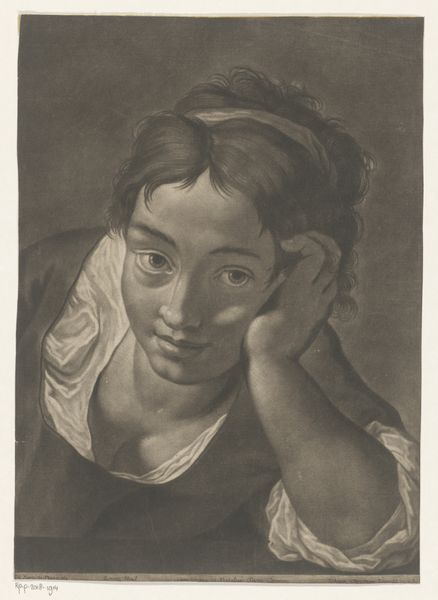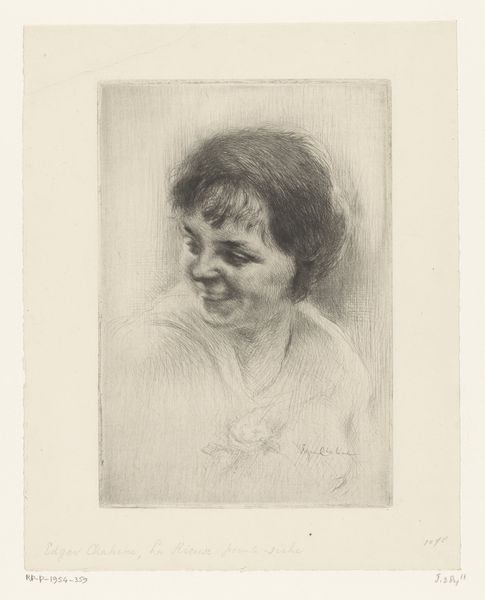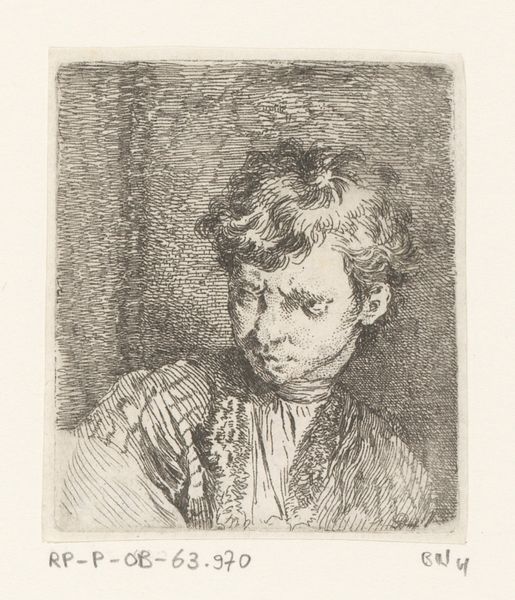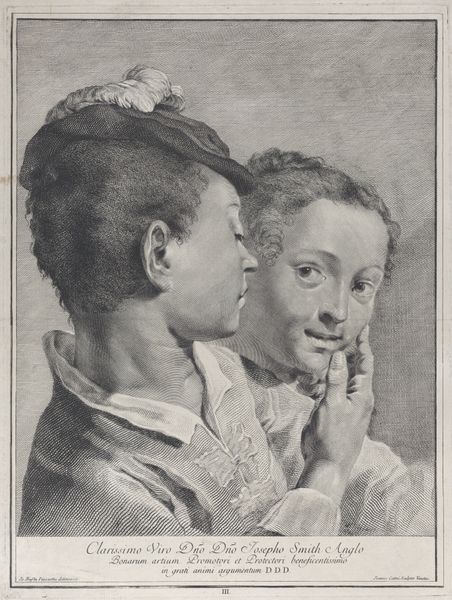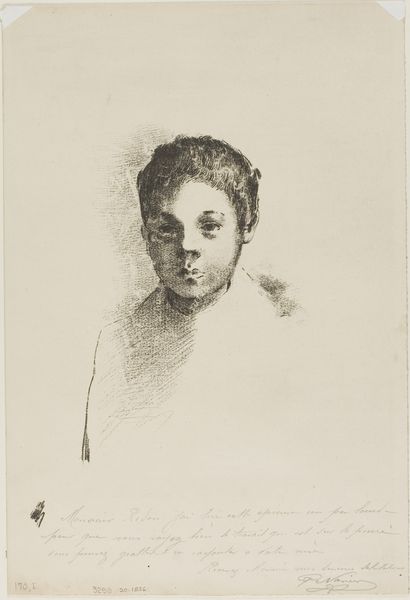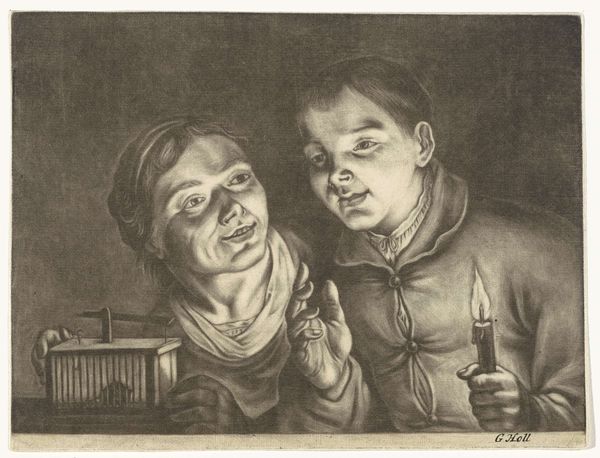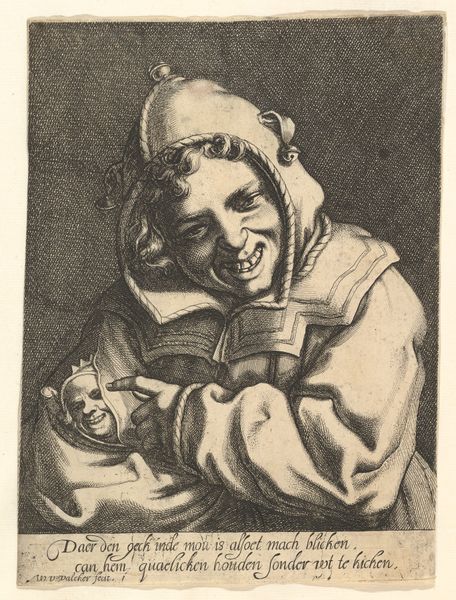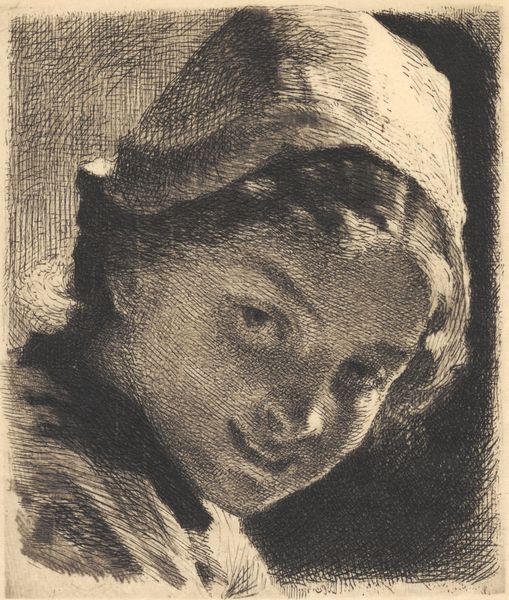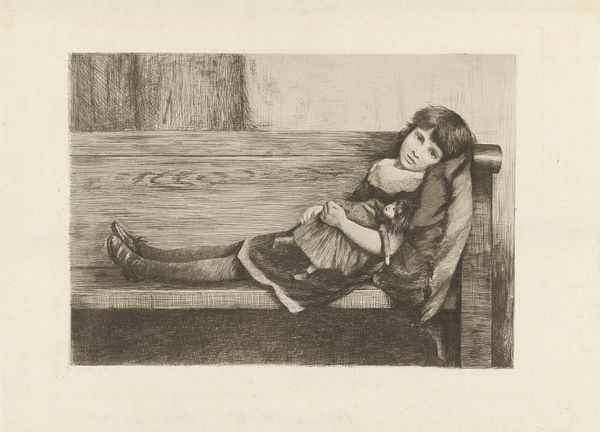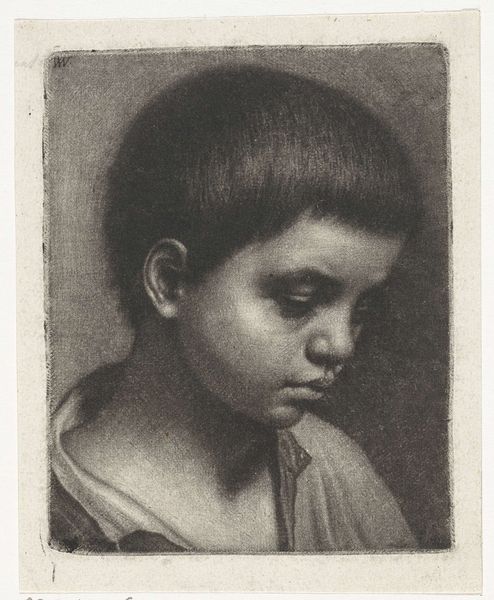
engraving
portrait
baroque
dog
northern-renaissance
engraving
Dimensions: height 327 mm, width 264 mm
Copyright: Rijks Museum: Open Domain
Curator: Let's take a moment to consider this engraving: "Portret van een onbekende jongen met hond," or "Portrait of an Unknown Boy with Dog," created by Johann Lorenz Haid sometime between 1712 and 1750. It's a striking example of Baroque portraiture rendered in monochrome. Editor: The first thing that strikes me is the sweetness. The boy’s expression is tender, almost melancholy, and the way he’s posed with the dog suggests a close bond. There's such intimacy captured within this print. Curator: Absolutely. Haid’s skill in using engraving to emulate the nuances of painted portraits is impressive. Notice how he achieves depth and texture. The varying densities of lines create subtle gradations of tone, especially in the boy's hair and the dog's fur. Editor: The darkness in the background really brings them both forward. I wonder about the social implications of portraying children with animals during this period. This engraving complicates traditional depictions of innocence because that stare also feels slightly world-weary. Curator: That contrast might reflect evolving social attitudes towards childhood. Prior to this period, children were often portrayed as miniature adults. Here, the tenderness and connection with the animal reflect a more sentimental appreciation for childhood and familial affection. We can view it through that cultural lens. Editor: And who could afford such a commissioned piece? These details highlight the class status implied in a work of art like this, showing ownership of pets and artistic luxury as signs of wealth and status. The print can tell us as much about the sitter as it tells us about who and how art gets produced. Curator: Precisely. These prints circulated amongst a bourgeois class and would be accessible to middling collectors interested in the cultural capital. This particular print in our collection gives insight into artistic consumption during the eighteenth century and beyond. Editor: That's why situating the portrait within broader cultural discourses of that era helps us examine power dynamics related to class, access, and representation. Even in this sentimental depiction, we see evidence of historical inequalities. Curator: So it’s not just a charming depiction, but also a cultural document—a complex image laden with historical implications. Thank you for sharing these thoughts, that really opens the artwork up to contemporary discourse! Editor: The pleasure is mine. It's exciting to see an image of childhood so embedded in history.
Comments
No comments
Be the first to comment and join the conversation on the ultimate creative platform.
